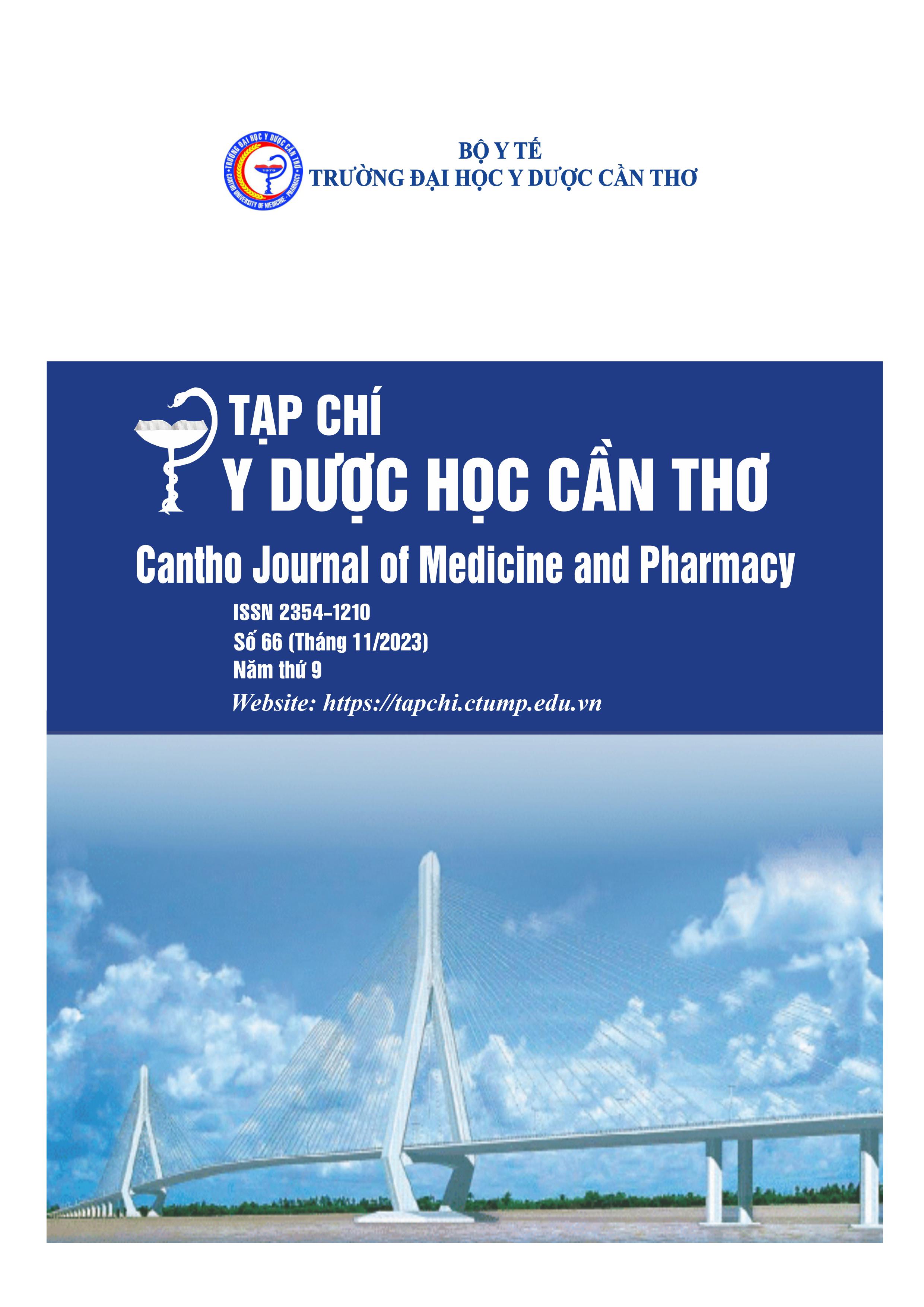RESEARCH ON THE SITUATION OF USE OF PROPHYLACTIC ANTIBIOTICS IN SURGERY IN THE DEPARTMENT OF PEDIATRICS, CAN THO CHILDREN'S HOSPITAL
Main Article Content
Abstract
Backgrounds: Can Tho City Children's Hospital has been applying antibiotics for surgical prophylaxis for a long time but there has not been an official document guiding the use of antibiotics. On that basis, recognizing the urgency of studying the situation of antibiotic use for surgical prophylaxis in the Surgical Department, this article examines patient characteristics, characteristics of drug use and results of medical record recording for prophylactic antibiotics in the Surgical Department. Objectives: To survey patient characteristics, characteristics of antibiotic use for surgical prophylaxis and errors in recording the use of prophylactic antibiotics in medical records at the Department of Surgery, Can Tho City Children's Hospital. Materials and methods: cross-sectional descriptive study on 763 medical records of surgical patients at the surgical department of Can Tho City Children's Hospital from 9/2022 to 3/2023. Data is collected and processed by Excel 2016 software. Results: 763 medical records were included in the study. The median age was 6 years; males accounted for 60.94%;. Prophylactic antibiotic use in surgery and procedures accounted for 48.23%. There are 6 antibiotics used prophylactically. Cefoperazone is the most used at 72.55%. The number of properly recorded medical records for prophylactic antibiotics accounted for 74.71 percent. Conclusion: The rate of prophylactic antibiotic use in surgery and procedures is relatively low (48.23%). The error rate in medical record recording on prophylactic antibiotic use is relatively high (25.29%). Prophylactic antibiotics were concentrated only on intravenous cefoperazone (72.55%).
Article Details
Keywords
: prophylactic antibiotics, surgery, documentation of medical records
References
2. WHO. Antimicrobial resistance. 2022. https://www.who.int/news-room/factsheets/detail/antimicrobial-resistance.
3. Bộ Y Tế. Hướng dẫn thực hiện quản lý sử dụng kháng sinh trong bệnh viện. NXB Y Học Hà Nội 2022.
4. Bộ Y Tế. Hướng dẫn phòng ngừa nhiễm khuẩn vết mổ. NXB Y Học Hà Nội. 2012.
5. CDC. Centers for Disease Control and Prevention Guideline for the Prevention of Surgical Site Infecttion. 2017.
6. Đỗ Thúy Anh, Phạm Thu Hà, Nguyễn Thị Hằng, Đặng Hoàng Thơm, Nguyễn Vũ Hoàng, Trịnh Xuân Long (2023), Đánh Giá Sự Tuân Thủ Quy Trình Sử Dụng Kháng Sinh Dự Phòng Trong Phẫu Thuật Tại Hai Khoa Sọ Mặt & Tạo Hình Và Chỉnh Hình, Bệnh Viện Nhi Trung Ương, Tạp Chí Nhi Khoa 2023, 16 (2). https://doi.org/10.52724/tcnk.v16i2.194
7. Tổng Cục Thống Kê. https://www.gso.gov.vn/
8. WHO. Body mass inder-for-age (BMI-for-age). https://www.who.int/toolkits/child-growthstandards/standards/body-mass-index-for-age-bmi-for-age.
9. Nguyễn Hoàng Nam, Nguyễn Thị Trân Châu, Phùng Nguyễn Thế Nguyên, Tạ Văn Trầm (2022), Đặc điểm lâm sàng, cận lâm sàng ở trẻ phẫu thuật đường tiêu hóa bị nhiễm khuẩn vết mổ tại
Bệnh viện Nhi Đồng 1, Tạp Chí Y Học Việt Nam. 520 (1B), 27-33. https://doi.org/10.51298/vmj.v520i1B.3831


